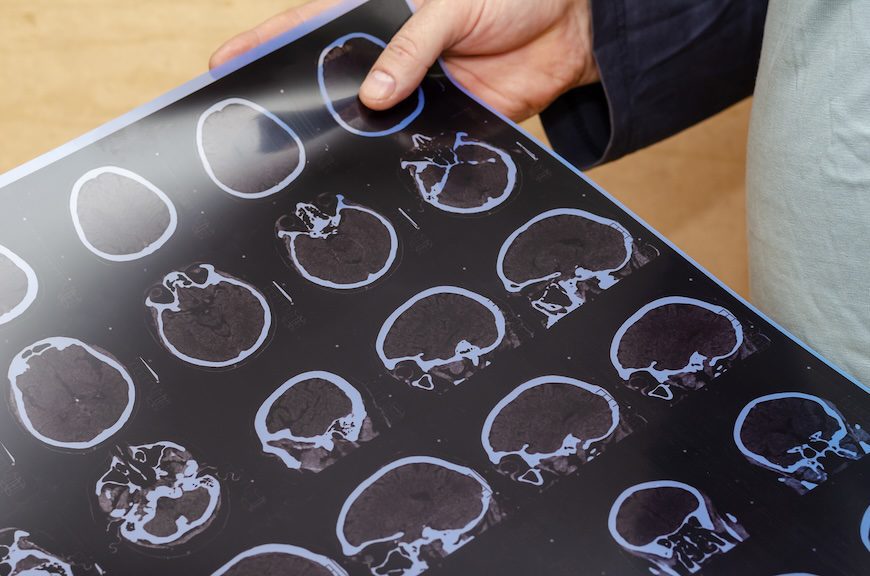Glucagon-like peptide 1 receptor agonists (GLP-1RAs), a class of antihyperglycemic drugs known for their weight loss benefits, might be the biggest drug debut since the first generation of birth control drugs hit the market in 1960.
Think about it:
- The experts at Chase expect sales to surge past $71 billion over the next half decade.
- Roughly one out of eight Americans have tried the injections, according to the Kaiser Family Foundation.
- Yogurt sales are through the roof.
- And bariatric surgeons find themselves confronted with an existential crisis. One survey shows that they’ve already lost a quarter of their business since GLP-1s hit the mainstream.
Despite this “overnight” success, the broader health implications of these wonder drugs remain elusive. New research looks to change that. Working with data from the U.S. Department of Veterans Affairs, a group of St. Louis researchers sought to chart the pathways between GLP-1RAs and a wide swath of health outcomes – 175 of them. And – as with most things in life – there’s good news and bad news.
The Good,
The researchers discovered a host of benefits that go way beyond weight loss.
- Neuropsychiatric Benefits: The data exposed a link between GLP-1RA use and lower risk of substance use and psychotic disorders, as well as neurocognitive conditions such as Alzheimer’s disease and dementia. Animal studies suggest GLP-1RAs tamp down neuroinflammation and oxidative stress, which fuel these cognitive benefits.
- Cardiometabolic and Renal Protection: Researchers also found decreased risks of heart failure, stroke, chronic kidney disease, and thromboembolic conditions. They attribute these benefits to improved endothelial function and weight loss, attributes of GLP-1RA therapy.
- Infectious and Respiratory Conditions: The study uncovered lower rates of sepsis, chronic obstructive pulmonary disease (COPD), and respiratory failure. This supports earlier research that showed that GLP-1RAs boost the user’s immunity while reducing airway inflammation.
- Gastrointestinal and Hepatic Disorders: Finally, the paper reports lower risks of inflammatory bowel disease and hepatic failure.
The Bad,
But few things in life are without their drawbacks. And GLP-1RAs are no different. The research found elevated risks in some conditions, such as:
Gastrointestinal Disorders, which included nausea, nephrolithiasis, and pancreatitis.
- Hemodynamic Effects: The data pointed to higher rates of hypotension and syncope, which required close blood pressure monitoring.
- Musculoskeletal and Renal Concerns: The drugs also appeared to induce higher risks of arthritic disorders, joint pain, and interstitial nephritis.
And Cognitive Health.
The study results that highlight reduced risks of substance use disorders and psychotic conditions illuminate the potential for GLP-1RAs as effective treatments for neuropsychiatric illnesses. By mitigating the rewarding effects of addictive substances, GLP-1RAs could serve as supplemental addiction therapies.
The paper’s authors added that their antidepressant and antipsychotic properties demand further investigation in clinical trials. It’s also worth noting that GLP-1RAs reduced the risks of dementia and Alzheimer’s disease.
Ongoing randomized trials, such as Evoke and Evoke+, are expected to clarify these neuroprotective effects by 2025.
Study Design and Methodology
The team built a cohort of nearly two million diabetes patients, tracking their health outcomes over a median follow-up period of 3.68 years.
Participants included 215,970 individuals who started taking GLP-1RAs, compared against groups using sulfonylureas, DPP4 inhibitors, SGLT2 inhibitors, a composite of these agents, and those maintaining their non-GLP-1RA antihyperglycemics regime.
The study employed a discovery-based approach to evaluate associations across 175 health outcomes, offering an extensive “atlas” of GLP-1RA effects.
Implications
The research team concluded by pushing for a more thorough exploration of GLP-1RAs and how they might be able to treat multimorbidities, especially those with a link to obesity and metabolic dysfunctions. The overlap between pathways affected by GLP-1RAs and those triggered by SARS-CoV-2 also suggests that there could be a role for these drugs in treating long COVID symptoms.
This study lays bare the considerable pleiotropic effects of GLP-1RAs, including protective and adverse outcomes. By exposing these previously unreported connections, the findings could have huge implications for clinical care, pharmacovigilance, and future research.
And as GLP-1RAs continue to gain widespread acceptance, it’s critical that we get a better handle on their wide-ranging impacts so that we can make the most of their ability to manage diabetes, obesity, and more.
Further Reading
The Association Between Sleep Disturbances and Perceived Stress in Substance Use Disorder Treatment



